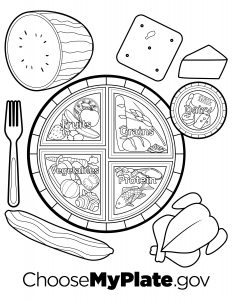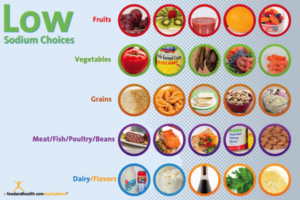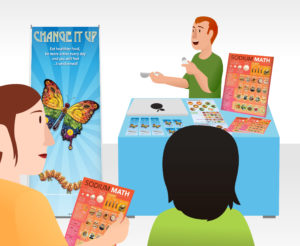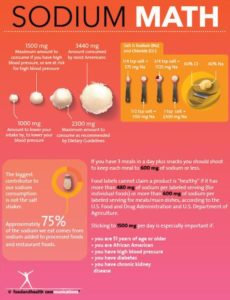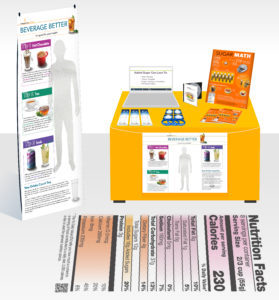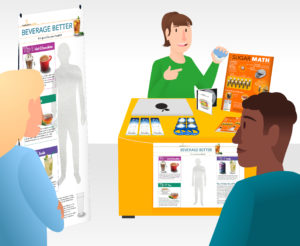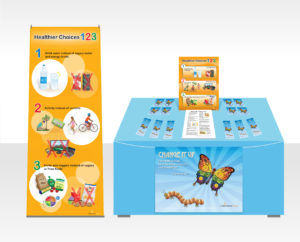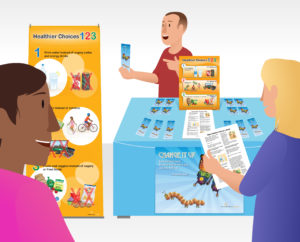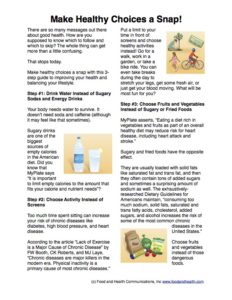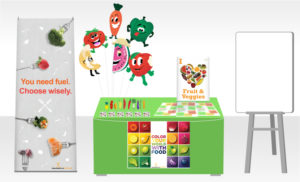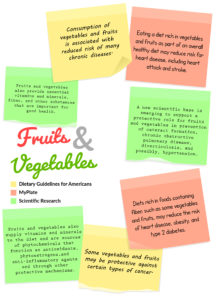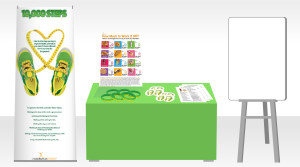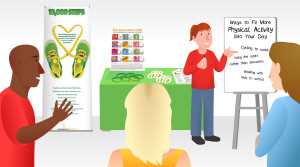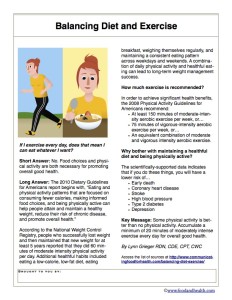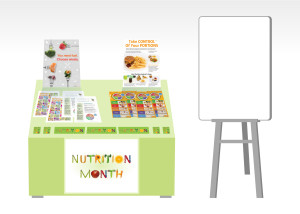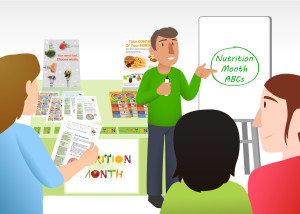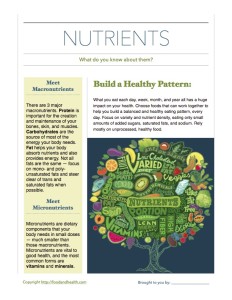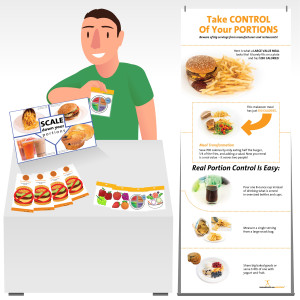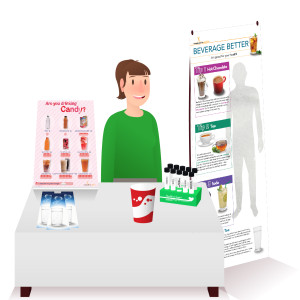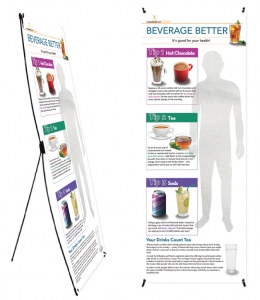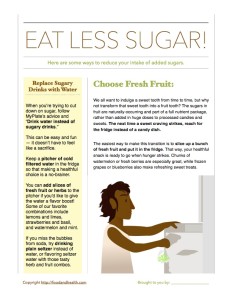It’s time for another display of the month, and this one is all about the new format of the Nutrition Facts label. Did you know that these new labels are already hitting stores? Help your clients use the new food labels to improve their eating patterns by inspiring them with this great display…
The Materials:
- Banners: 48-inch by 36-inch Banner or 26-inch by 62-inch Banner and Stand
- Posters: New Food Label Poster or Food Label Math Poster
- Floor Sticker: Nutrition Facts Floor Sticker
- Prizes/Smaller Decorations: I Know How to Read a Food Label Stickers, New Food Label Bookmarks
- Handouts: Nutrition Facts Tearpad
The Activities:
- The Label Says: Nutrition Facts Label Game
- Food Label Comparison: What a Difference a Label Makes
The Display:
Instead of setting up a tabletop display as we’ve done in the past, this month’s display can be arranged on a bulletin board or a spare space on any wall. If you’d like to adapt it to a tabletop display, you absolutely can, and you’ll probably need a few of these fabulous Tabletop Easels to ease the transition.
Anyway, make either or both of the New Food Label Posters or Food Label Math Posters the center of your display (if you have more room, you can also use the 48-inch by 36-inch Nutrition Facts Banner). Surround your poster or banner with stickers and bookmarks so that the whole display looks like a sunburst with the posters or banner in the middle.
Either tear off a few handouts from the Nutrition Facts Tearpad or mount the whole thing to the wall just to the right of your sunbursts so that interested parties can take a sheet home for themselves. Balance the handouts on the other side with the 26-inch by 62-inch Food Label Banner and Stand. Arrange the Nutrition Facts Floor Sticker in front of your display for an extra-intriguing draw to your information, then step back and admire the view.

Food Label Math Poster
$22.75 $25.50
Add to Cart
Activity Leader Guide:
To play The Label Says: Nutrition Facts Label Game, you’ll need a projector, a screen, and a copy of the The Label Says: Nutrition Facts Label PowerPoint presentation. Everything else you need is built into the presentation itself, so as long as you review it before you start presenting, you’ll simply need to turn it on and work your way through the slides. In this game, participants will evaluate a food based on information from its Nutrition Facts label, learning common label-reading mistakes and exploring healthful eating pattern strategies along the way. The I Know How to Read a Food Label Stickers and New Food Label Bookmarks make great prizes and incentives!
For the second activity, Food Label Comparison: What a Difference a Label Makes, you’ll need to do a bit more legwork. Bring in a few varieties of the same foods (3 fruit juices, 3 cans of beans, etc) that each have different Nutrition Facts. Compare across the types of foods and find the most healthful options as a group. What parts of the label were the most useful? Why? Use this activity to highlight the impact of reading a food label on health, explaining that the new Nutrition Facts label is a helpful tool for developing and maintaining a healthful eating pattern.

New Food Label Handout Tearpad
$42.00 $46.00
Add to Cart
Other Fantastic Display Ideas:
We’ve been putting together these display posts for a while now, so there’s lots of inspiration available for a wide range of health and nutrition topics. Which ones will be the most useful for you?
- 10,000 Steps
- Beverage Better
- Eating Pattern Shifts
- Fresh Fruit and Vegetable Month
- Nutrition Month
- MyPlate
- Portion Control
- Sodium Math
- Sugar
- Sugar Math
Store Links:
Here’s a closer look at some of the top new food label resources that my team and I have created…

New Food Label Vinyl Banner and Banner Stand 26" X 67"
$125.00 $135.00
Add to Cart

New Food Label Vinyl Banner 48" X 36"
$88.00 $110.00
Add to Cart








